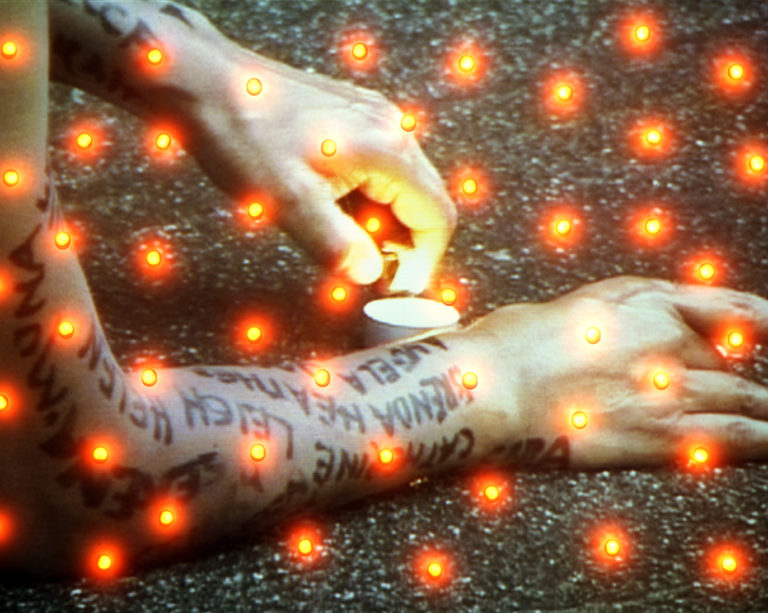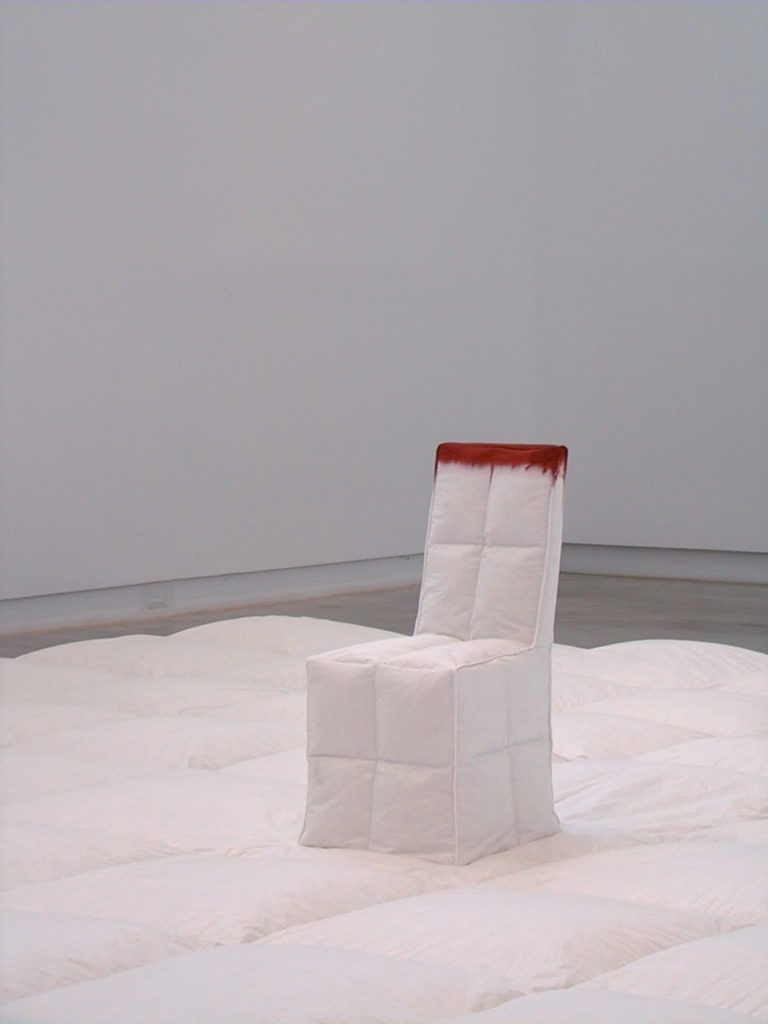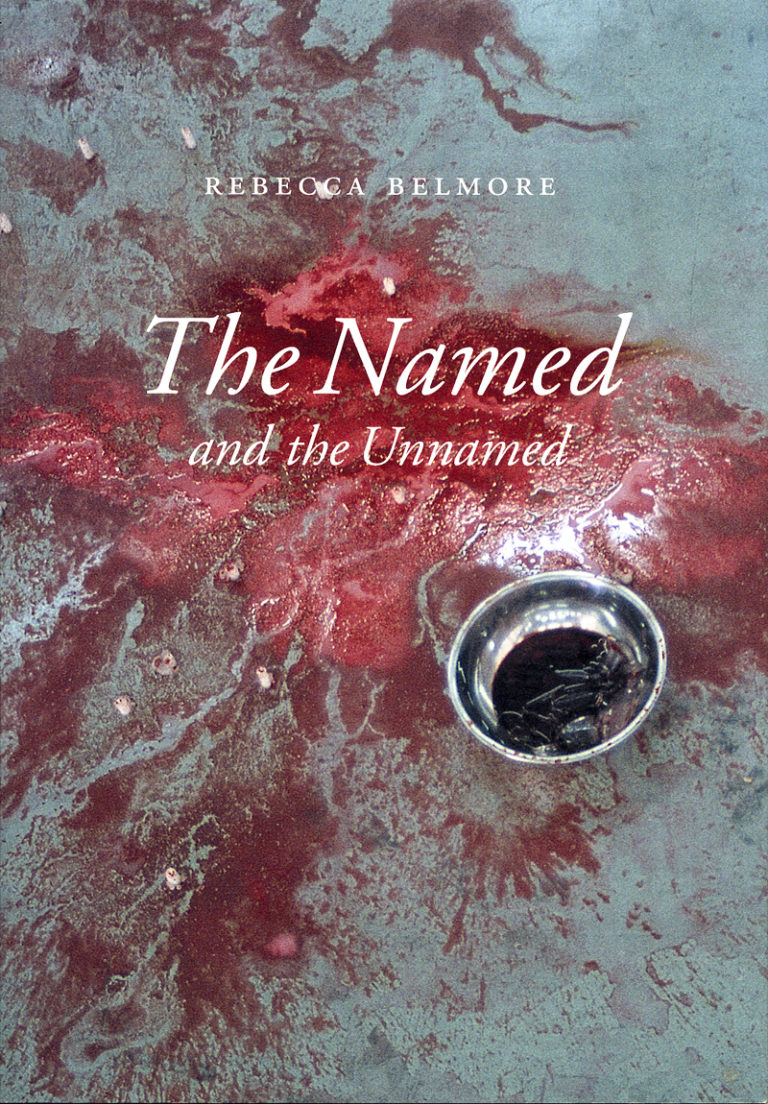4 October 2002 – 1 December 2002
Morris and Helen Belkin Art Gallery
Rebecca Belmore
-
Rebecca Belmore
ArtistRebecca Belmore (Lac Seul First Nation (Anishinaabe), b. 1960) is a multidisciplinary visual artist. Belmore is widely recognized for her performance, photographic and sculptural work that makes connections between bodies, land and language with ongoing social and political realities faced by Indigenous communities. Questions of authority, narrative and truth resonate throughout her practice. In 2005 she was the first Indigenous woman to represent Canada in the Venice Biennale. Her work has appeared extensively in exhibitions both nationally and internationally, and her solo exhibitions include the Belkin Art Gallery, Art Gallery of Ontario, and Justina M. Barnick Gallery. Belmore has received numerous honours and awards, including the Hnatyshyn Award (2009), the Governor General’s Award for Visual and Media Arts (2013) and Gershon Iskowitz Prize (2016). She attended the Ontario College of Art and Design in Toronto, and has received honourary doctorates from OCAD University (2005), Emily Carr University of Art and Design (2018), and NSCAD University (2019).
Read More
-
Charlotte Townsend-Gault, Curator
Curator -
Scott Watson, Curator
CuratorScott Watson (Canadian, b. 1950) is Director of the Morris and Helen Belkin Art Gallery and Professor in the Department of Art History, Visual Art and Theory at the University of British Columbia. A curator whose career has spanned more than thirty-five years, Watson is internationally recognized for his research and work in curatorial and exhibition studies, contemporary art and issues, and art theory and criticism. His distinctions include the Hnatyshyn Foundation Award for Curatorial Excellence in Contemporary Art (2010); the Alvin Balkind Award for Creative Curatorship in BC Arts (2008) and the UBC Dorothy Somerset Award for Performance Development in the Visual and Performing Arts (2005). Watson has published extensively in the areas of contemporary Canadian and international art. His 1990 monograph on Jack Shadbolt earned the Hubert Evans Non-Fiction Prize in 1991. Recent publications include Letters: Michael Morris and Concrete Poetry (2015); Thrown: British Columbia’s Apprentices of Bernard Leach and their Contemporaries (2011), a finalist for the 2012 Roderick Haig-Brown Regional Prize; “Race, Wilderness, Territory and the Origins of the Modern Canadian Landscape” and “Disfigured Nature” (in Beyond Wilderness, McGill University Press, 2007); and “Transmission Difficulties: Vancouver Painting in the 1960s” (in Paint, Vancouver Art Gallery, 2006). (2018)
Read More
Rebecca Belmore’s powerful installations confront the viewer with images of loss, struggle and silence. This exhibition features five new works, created during a residency at the Belkin Satellite over the summer.
Belmore’s work stages a relationship between bodily performance and installation. Vigil is based on a street performance by Belmore in polemical commemoration of the women who have gone missing in the downtown east side of Vancouver. The performance gives a contemporary context to the installation The Named and The Unnamed, which is a reflection on the larger implications of the local event. Blood on the Snow evokes a deafening stillness, a scene of comfort disrupted by traces of violence. In a third installation, a canoe is in the process of overturning—a vessel emptied of its body, suspended over the black depths of water, or death. Moving from the narrative to the poetic, from action to quiet reflection, Belmore’s new work speaks of the larger questions plaguing human existential awareness.
This exhibition is curated by Charlotte Townsend-Gault and Scott Watson. An illustrated catalogue will be produced by the Belkin in the spring of 2003 and will include essays by James Luna and Charlotte Townsend-Gault.

Rebecca Belmore, The Named and the Unnamed (detail), 2002. Installation: video projection, screen, light bulbs. Projection screen: 224.0 x 274.0 cm. Purchased with the financial support of the Canada Council for the Arts Acquisition Assistance Program and the Morris and Helen Belkin Foundation, 2005.
Photo: Howard Ursuliak.

Rebecca Belmore, blood on the snow, 2002. Installation: fabric, feathers, chair, acrylic paint. 610.0 x 610.0 x 107.0 cm. Courtesy of the artist.
Photo: Howard Ursuliak.

Rebecca Belmore: The Named and the Unnamed. Exhibition catalogue.
-
Rebecca Belmore
ArtistRebecca Belmore (Lac Seul First Nation (Anishinaabe), b. 1960) is a multidisciplinary visual artist. Belmore is widely recognized for her performance, photographic and sculptural work that makes connections between bodies, land and language with ongoing social and political realities faced by Indigenous communities. Questions of authority, narrative and truth resonate throughout her practice. In 2005 she was the first Indigenous woman to represent Canada in the Venice Biennale. Her work has appeared extensively in exhibitions both nationally and internationally, and her solo exhibitions include the Belkin Art Gallery, Art Gallery of Ontario, and Justina M. Barnick Gallery. Belmore has received numerous honours and awards, including the Hnatyshyn Award (2009), the Governor General’s Award for Visual and Media Arts (2013) and Gershon Iskowitz Prize (2016). She attended the Ontario College of Art and Design in Toronto, and has received honourary doctorates from OCAD University (2005), Emily Carr University of Art and Design (2018), and NSCAD University (2019).
Read More
-
Charlotte Townsend-Gault, Curator
Curator -
Scott Watson, Curator
CuratorScott Watson (Canadian, b. 1950) is Director of the Morris and Helen Belkin Art Gallery and Professor in the Department of Art History, Visual Art and Theory at the University of British Columbia. A curator whose career has spanned more than thirty-five years, Watson is internationally recognized for his research and work in curatorial and exhibition studies, contemporary art and issues, and art theory and criticism. His distinctions include the Hnatyshyn Foundation Award for Curatorial Excellence in Contemporary Art (2010); the Alvin Balkind Award for Creative Curatorship in BC Arts (2008) and the UBC Dorothy Somerset Award for Performance Development in the Visual and Performing Arts (2005). Watson has published extensively in the areas of contemporary Canadian and international art. His 1990 monograph on Jack Shadbolt earned the Hubert Evans Non-Fiction Prize in 1991. Recent publications include Letters: Michael Morris and Concrete Poetry (2015); Thrown: British Columbia’s Apprentices of Bernard Leach and their Contemporaries (2011), a finalist for the 2012 Roderick Haig-Brown Regional Prize; “Race, Wilderness, Territory and the Origins of the Modern Canadian Landscape” and “Disfigured Nature” (in Beyond Wilderness, McGill University Press, 2007); and “Transmission Difficulties: Vancouver Painting in the 1960s” (in Paint, Vancouver Art Gallery, 2006). (2018)
Read More